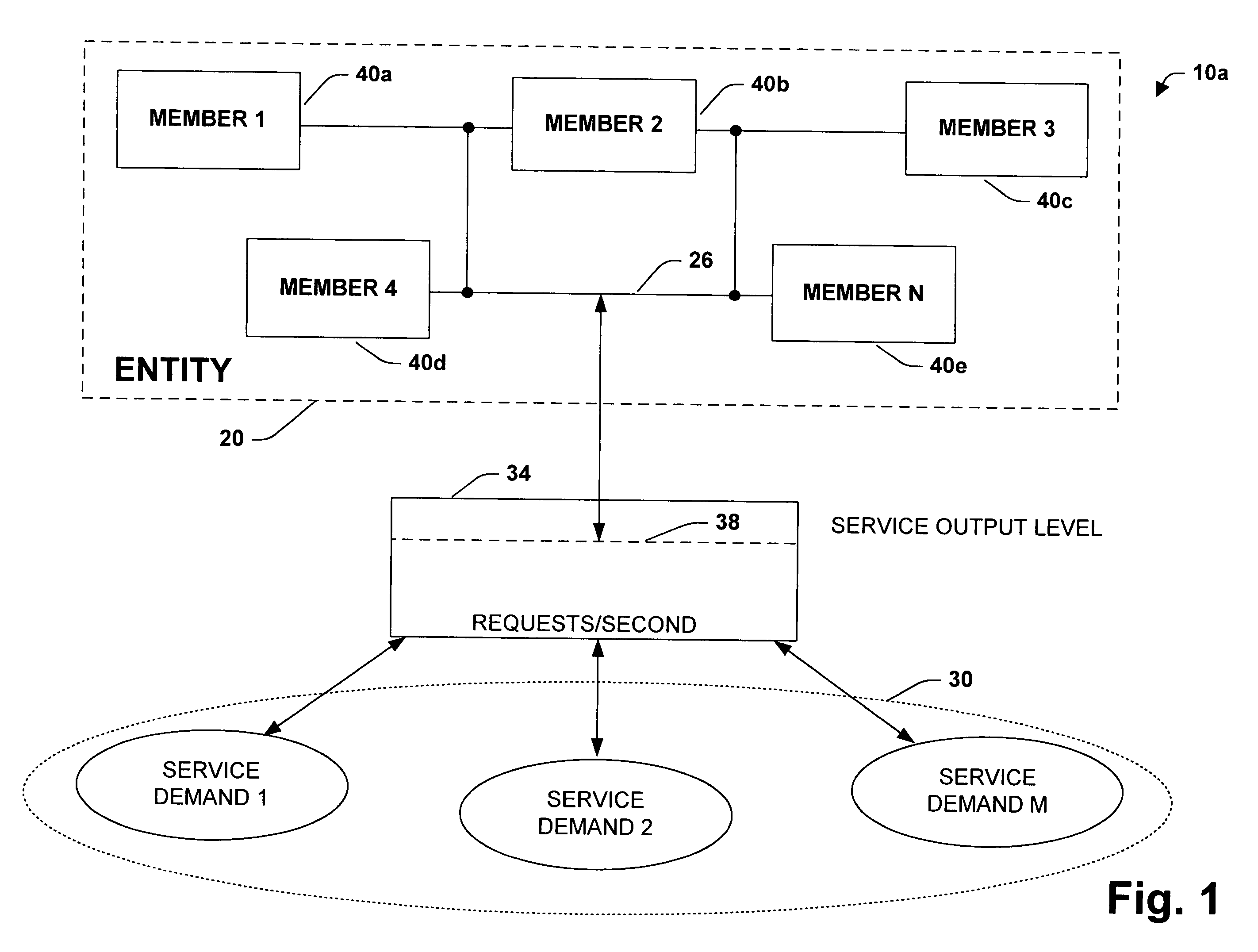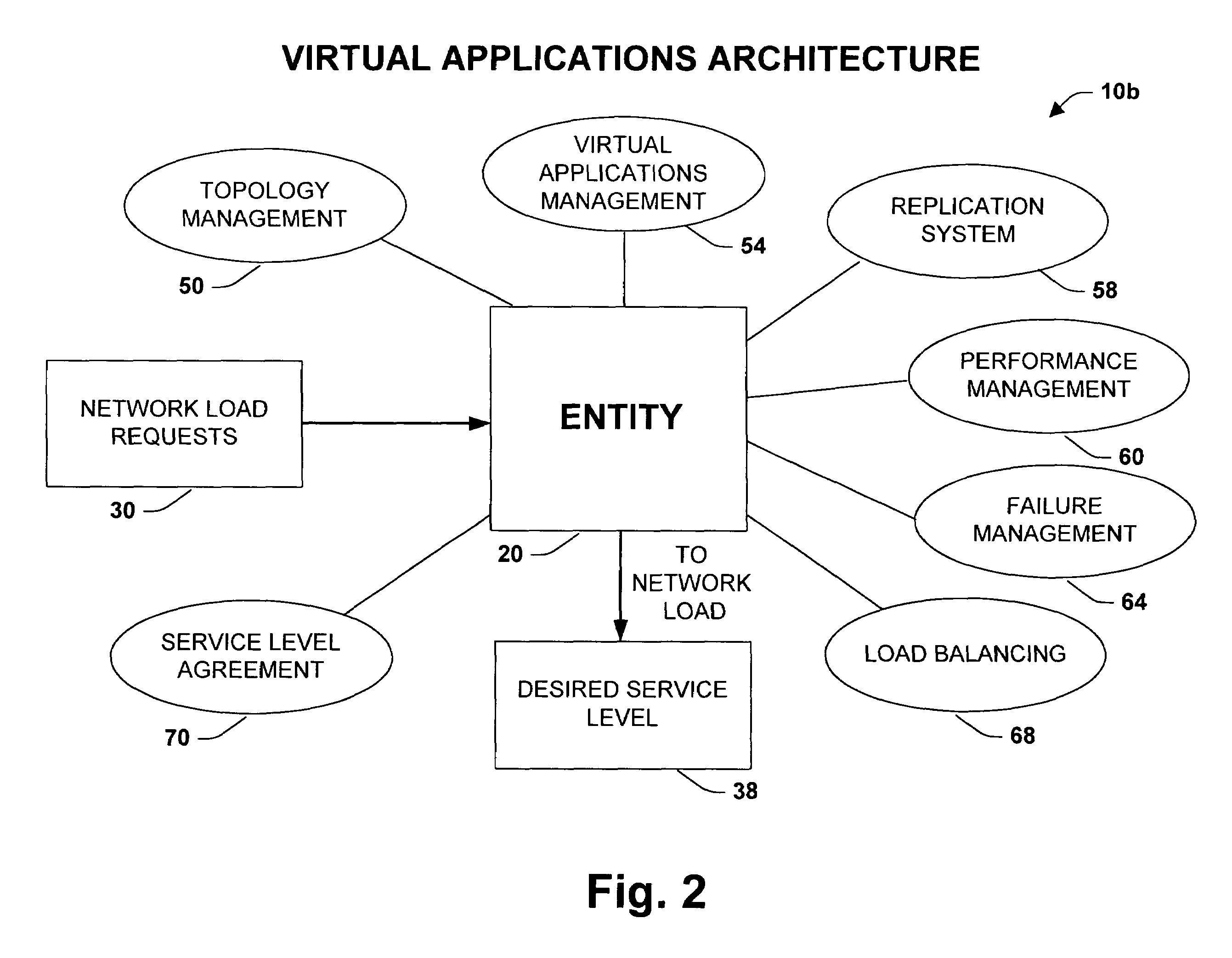System and method providing virtual applications architecture
- Summary
- Abstract
- Description
- Claims
- Application Information
AI Technical Summary
Benefits of technology
Problems solved by technology
Method used
Image
Examples
Embodiment Construction
[0024]The present invention is now described with reference to the drawings, wherein like reference numerals are used to refer to like elements throughout.
[0025]The present invention relates to a virtual applications architecture wherein a plurality of members may be scaled, managed, and administered as a cooperative entity. The architecture enables the members to collectively serve high volume network loads such as handling Internet and / or Intranet client Web page requests, for example. In accordance with the present invention, applications may be managed across the entity by a topology manager and a virtual applications manager. This may be achieved for example by having the topology manager control membership throughout the cluster by communicating with a defined set of members and initiating application content updates to the members as needed. A master copy of application content may be included within the virtual applications manager, and members may be updated to the master c...
PUM
 Login to View More
Login to View More Abstract
Description
Claims
Application Information
 Login to View More
Login to View More - R&D
- Intellectual Property
- Life Sciences
- Materials
- Tech Scout
- Unparalleled Data Quality
- Higher Quality Content
- 60% Fewer Hallucinations
Browse by: Latest US Patents, China's latest patents, Technical Efficacy Thesaurus, Application Domain, Technology Topic, Popular Technical Reports.
© 2025 PatSnap. All rights reserved.Legal|Privacy policy|Modern Slavery Act Transparency Statement|Sitemap|About US| Contact US: help@patsnap.com



